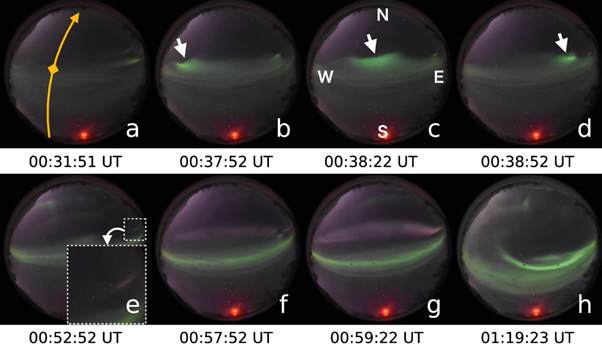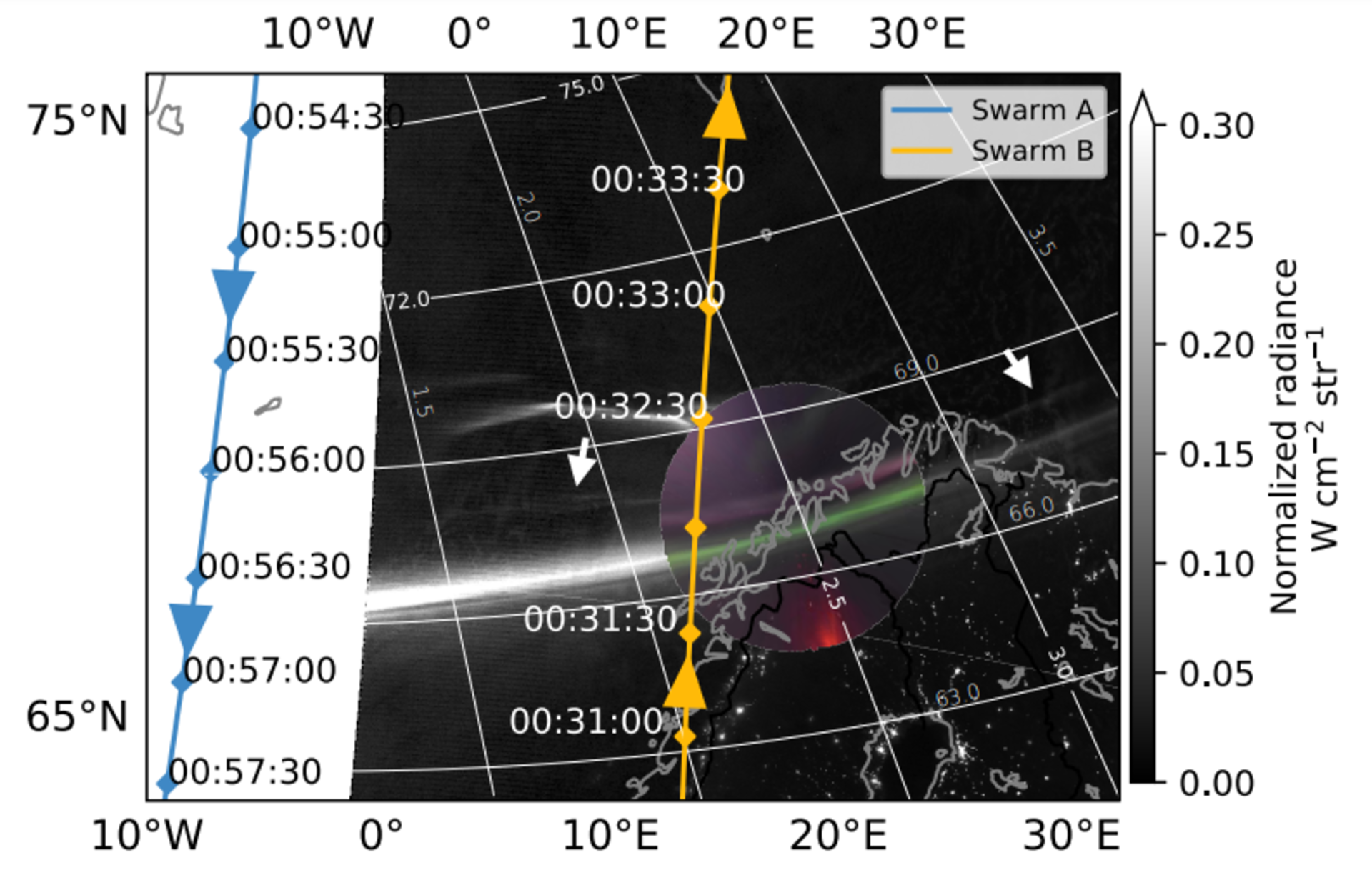In recent years skywatchers have been increasingly fascinated by the phenomenon known as STEVE, initially thought to be a type of aurora, but now recognized as being a sort of cousin. However, all STEVEs have been spotted before midnight – and not just because that is when amateurs are out taking photographs. A mirror image is expected between midnight and dawn, but has only now been found in a previously overlooked photograph from 2021, with the help of the European Space Agency’s Swarm satellites.
The auroras of early May alerted more people than ever before to the wonders of space weather, thanks to phone cameras, social media and early alerts. In recent years, those same developments have helped scientists learn that solar activity triggers other sorts of phenomena high in the atmosphere. These tend to occur in association with auroras, and can easily be confused with them, but involve different mechanisms.
Particular interest has focused on what was originally called Steve, now rebranded Strong Thermal Emission Velocity Enhancement (STEVE). As we have come to understand STEVE’s causes, atmospheric physicists have concluded it should only be possible for STEVEs to occur before midnight, something matched in all observations. But does STEVE turn into a pumpkin at the witching hour, or is there a matching phenomenon before dawn?
A search to settle that has revealed a series of image taken on December 28, 2021 from the Ramfjordmoen Research Station, Norway, as well as some less clear ones nine years earlier.
STEVEs are thought to be caused by streams of hot gas called sub-auroral ion drift (SAID). These move westward in the evening towards the now set Sun. After midnight the movement of the gas reverses, heading east in the direction of the future sunrise and is known as dawnside auroral polarization stream (DAPS).
Both SAID and DAPS are triggered by solar coronal mass ejections, just as auroras are, which is why they occur together. The question was whether DAPS are sufficient to trigger counter-STEVEs, or if there is an asymmetry that prevents that occurring.
Amateur skywatcher are likely to head to their beds by midnight, particularly in polar regions where the nights are cold. Many research cameras still use black and white, making it hard to distinguish auroral green from STEVE-like purple – but the Ramfjordmoen all-sky camera uses color, and doesn’t quit.
Searching through archives of its observations, photographer Gabriel Arne Hofstra spotted two sets of images taken after midnight showing the STEVE’s tell-tale mauve coloring, next to classic green. Still, claiming to have identified a new phenomenon based on a handful of photographs over two nights might trigger the same response as a grainy image purporting to be Bigfoot or the Loch Ness Monster. Hofstra and colleagues knew they needed evidence these coincided with an eastward hot gas stream in the right location.

The first signs of the not-STEVE showed up an hour and a half after midnight local time, lasting about 30 minutes.
Image Credit: Ramfjordmoen Research Station
They checked the records of the European Space Agency’s three Swarm satellites, launched in 2013, and found two of them had been close enough to measure electric field conditions coinciding with the 2021 event. These revealed a current caused by a rapid eastward ion flow. The observed event differs from a STEVE in one way – it is closer to the pole than the true aurora, whereas STEVEs are at lower latitudes than simultaneous auroras. This makes the morning phenomenon even harder to catch.

The path of the Swarm A and B satellites and the passage of electric charges they recorded.
Image Credit: Nanjo, S., Hofstra, G.A., Shiokawa, K. et al./Earth, Planets and Space.
“As a scientist, collaborating with a photographer to uncover this new phenomenon has been a fantastic experience,” said Sota Nanjo of the University of Electro-Communications, Tokyo in a statement. “Our findings not only open new avenues in auroral physics, but also underscore the importance of continuous collaboration between scientists and photographers. Such efforts are particularly crucial in the coming years as solar activity approaches its peak, when we may encounter extraordinary phenomena.”
The stunning show of May 10 has almost certainly inspired more people to chase sky lights, and presumably not all will be quitting on the dot of 12 (or even 1 am where daylight savings apply). In the process of photographing auroras, some may capture a brief accompanying purple arc.
Clearly, we need a better name for this than counter-STEVE, however. EVE is the obvious choice, but might be too confusing for a morning phenomenon, even one first detected so close to Christmas. Perhaps we could really get on some people’s nerves and call it ADAM.
The findings are published open access in the journal Earth, Planets and Space.
Source Link: STEVE, The Purple Aurora-Like Phenomenon, Has A Mysterious Morning Twin